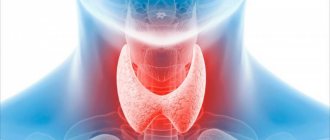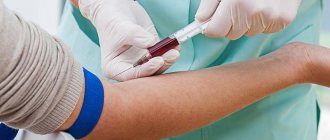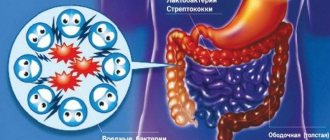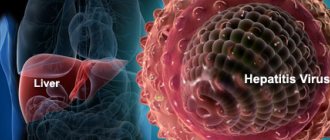Specifics of the study
The first thing you need to know about this test is that its results are not definitive proof of cancer development.
This antigen does not belong to the category of specific and sensitive exclusively to mutated cells. Protein specificity rates range from 75 to 100 percent, which, combined with sensitivity of 68 to 93 percent, makes false-positive rates likely. However, if the norm is exceeded a hundred times or more, there is a 96 percent chance of having cancer. Once the problem is detected, the doctor can prescribe adequate therapy. Scientific studies show that those patients whose test results showed a decrease or stabilization of indicators have a better prognosis than patients with increasing values.
Among the distinctive features of the study it is worth noting:
- the need for additional screening diagnostics;
- the likelihood of undetecting a pathogenic protein in a person with a certain blood type, even in the presence of tumors and metastases;
- often carried out in combination with CEA or CA 72-4, if the doctor thinks that the patient has a neoplasm in the intestines or gastric carcinoma.
So, you now know what antigen means, so you can begin to determine which categories of patients are prescribed for examination.
Purpose of the procedure
The most common cases when there is a need to check compliance with the antigen standard:
- Prevention of cancer pathologies in people with an unfavorable family history - if there have been cases of gastric carcinoma and similar diseases in the family, the health status must be closely monitored.
- Obvious symptoms of the development of a neoplasm in the pancreas or already identified cancer.
- Detection of recurrent disease.
- Monitoring the degree of effectiveness of anti-cancer therapy - based on the decoding of the analysis and the difference from the norm of the tumor marker Ca 19-9, the doctor can understand whether the prescribed treatment has the desired effect, and, if necessary, make adjustments to the regimen.
- Checking the assumption of the development of malignant or benign neoplasms in the liver, gall bladder, gastrointestinal tract, and bile ducts.
- Determining the dynamics of the patient's condition.
- Detection of metastases before characteristic signs of disease spread appear.
In addition to cancer, the study can detect cystic fibrosis, cholecystitis in the chronic stage, cirrhosis of the liver and gallstones, as well as a number of inflammatory pathologies. An experienced oncologist knows exactly what the Ca 19-9 tumor marker shows and can use the data obtained to prescribe other necessary examinations and establish a diagnosis. Often, it is the decoding of this analysis that helps to identify the disease at a stage when a clear clinical picture has not yet formed. It is much easier to defeat cancer at an early stage, so if the doctor prescribed it, it means there is a need for it.
General information
Tumor marker CA 19-9 is a laboratory indicator that determines the presence of malignant neoplasms of the pancreas, second in importance after CEA. Detection of CA 19-9 in the blood makes it possible to diagnose carcinoma at an early stage, inflammatory processes of the pancreas (for example, pancreatitis) and pathologies of other internal systems.
Analysis for CA 19-9 is also informative for monitoring the effectiveness of conservative or surgical treatment of cancer. In addition, this study is an important criterion in the diagnosis of oncological processes in the large intestine with a negative test result for cancer embryonic antigen (CEA).
CA 19-9 is a high-molecular glycated protein that is produced in the body of the embryo and adult by the epithelium of internal organs: stomach, liver, kidneys, bile ducts, prostate, bronchi, salivary glands, pancreas, uterus, etc. The tumor marker can also be detected in biological fluids (bile, ejaculate, blood plasma, pancreatic secretions).
Excretion (removal from the body) of the antigen occurs along with bile. Therefore, in case of any disturbances in the secretion and/or outflow of bile, a significant increase in the concentration of tumor marker in the blood plasma is observed. In order to differentiate the cause of deviation of CA 19-9 from the norm and make an accurate diagnosis, in parallel with this test, other blood tests are prescribed for bile enzymes: alkaline phosphatase, gamma-glutamyltransferase.
CA 19-9 is of great importance for the early detection of pancreatic tumor metastases and treatment monitoring.
CA 19-9 has recently been considered the most specific (75-100%) and sensitive (68-90%) marker for early diagnosis and monitoring of therapy for pancreatic cancer. Medical practice demonstrates that when levels are above 1000 U/ml of blood, in 96% of cases the patient was diagnosed with inoperable carcinoma. An increase in the component in the blood in 75-80% of cases indicates carcinoma of this organ, but in 25-20% of cases its normal level also does not exclude cancer. This is due to the fact that about 5-7% of patients are negative for Lewis antigen (the body does not produce this glycoprotein). It is noted that this phenomenon is more often observed in patients of the Caucasian race. In this case, a test for CA 50 is prescribed to clarify the results.
CA 19-9 is not recommended for use as a screening test, i.e. test for routine examinations to detect pancreatic cancer, since its sensitivity (68-93%) and specificity (76-100%) are insufficient for primary accurate diagnosis.
It was noted that the antigen level also increases in other gastrointestinal malignant processes (in 60% in liver tumors, in 50% in malignant stomach tumors, in 30% in rectal carcinoma).
Analysis for CA 19-9 is highly informative for assessing the risk of cancer metastasis and relapse (together with a test for CEA in the blood), since in 90% of cases it shows an increase in values already 3-6 months before the onset of symptoms. That is why the test for CA 19-9 is prescribed to monitor the treatment of mucinous forms of ovarian cancer, as well as various forms of stomach cancer, colorectal cancer and, of course, pancreatic carcinoma.
What indicators are considered normal?
The international system of standards has not established the norm of the tumor marker Ca 19-9 in the blood. Differences in acceptable values are associated with variability in the methods for studying the biomaterial and the reagents used. If you carefully study the survey form, you will see that the standard values are indicated in the reference indicators field. For women and the stronger sex, the norm is identical and averages 10-37 (sometimes up to 35) units per milliliter.
Attention! Given the narrow limits of the norm, the analysis with decoding should be carried out for the first and subsequent times in the same medical center.
When CA 19-9 values exceed normal
An increase in the level of glycoprotein can occur against the background of inflammation and benign tumors in the digestive system and in the liver - often up to one hundred units per ml, but in special cases it can reach up to five hundred units per ml. This increase in glycoprotein content also occurs in cystic fibrosis. In the first option, the concentration can be increased in 12% of patients. The glycoprotein is usually excreted in bile. In connection with this process, cholestasis is accompanied by an increase in data on the level of CA 19-9. In such cases, gamma-glutamate transferase and alkaline phosphatase studies are performed simultaneously. An increase in CA 19-9 data can also occur against the background of tumors in another area (colorectal cancer, ovarian tumors, liver cirrhosis, spleen cancer, hepatitis).
Excess in various pathologies
The likelihood of readings being higher than normal varies depending on the disease.
Mostly upward jumps in values occur when foci of cell mutation form in organs such as the gallbladder (in 90% of cases), mammary gland (70%), liver (90%), sigmoid and rectum (90%), pancreas (100%). %), ovary (70%), bile ducts, uterus. In such patients, during decoding, an increase in the tumor marker Ca 19-9 to 500 units/ml and above is recorded. As for benign processes, their values do not exceed the specified limit, and the chance that exceeded parameters indicate a disease is 50 to 50. Among the diseases during which the antigen in the blood becomes more than normal, there are acute, chronic and toxic forms hepatitis, cirrhosis, hereditary damage to the exocrine glands, cholelithiasis, gastrointestinal tract infections and cholecystitis.
What do the CA 19-9 indicators say?
With cancer in the pancreas, high levels of glycoprotein are shown. Conducting studies of this tumor marker, the permissible readings of which are within 10 units/ml, are needed when diagnosing carcinoma and assessing the possibility of using surgery. When CA 19-9 readings are above a thousand units per ml, a cancerous tumor is considered operable in a minimum number of patients - about 5% of patients. If the tumor marker reading is below this figure, the tumor can be removed with a greater chance of a good prognosis. But after surgical removal, there is a risk of relapse within one to seven months.
Note! CA 19-9 is considered second in importance after CEA for diagnosing a malignant tumor in the stomach.
In addition, the study of high molecular weight glycoprotein is prescribed in addition to alpha-fetoprotein when diagnosing and monitoring the treatment of tumors of the gallbladder and liver.
Doctors say that it is unrealistic to make a correct diagnosis based only on the results of studies on CA 19-9. The results of this analysis should not be used to determine the extent of surgery.
Recommendations for preparation
The informativeness and reliability of the data during the examination equally depends on the quality of the equipment, the professionalism of the laboratory technicians and the behavior of the patient himself. To avoid receiving false positive results, you must:
- inform the doctor about the need to take any medications - if possible, then you should stop taking medications for a day. If the drugs cannot be stopped, the doctor will take this into account when interpreting the analysis for Ca 19-9 tumor markers;
- do not drink alcoholic beverages for three days before the procedure, and do not smoke on the day of blood sampling;
- review your diet - so that the indicators are informative, it is undesirable to eat spicy and fried foods, give up exotic foods and fatty foods;
- come to the laboratory hungry - biomaterial is taken on an empty stomach, so the last meal should be 8 hours before;
- calm down - nervous experiences affect the composition of the blood, so before entering the manipulation room, sit for a couple of minutes in the hall;
- do not engage in heavy physical labor for about three days (this also includes intense sports training);
- warn if within 7 days before the procedure you underwent ultrasound diagnostics, magnetic resonance or computed tomography.
Detailed description of the study
Analysis for the tumor marker CA 19-9 is used as a method for diagnosing cancer of the gastrointestinal tract. Its indicators are most sensitive to tumors of the pancreas, sigmoid and rectum, liver and biliary tract. The determination of CA 19-9 is often used in combination with CEA.
Tumor marker CA 19-9 is a fragment of a glycolipid synthesized in the epithelium of the gastrointestinal tract and lungs. It is excreted from the body with bile, so an increase in its concentration in the blood can be caused by pathologies of the biliary tract.
A single increase in the concentration of a tumor marker in the blood is not considered a basis for a diagnosis of cancer. But this should be a reason for further examination.
Cost of analysis
the price is indicated without taking into account the cost of collecting biological material
Add to Basket
Readiness of analysis results
Regular*: 1 r.d.
Date of analysis: Date of readiness:
*not counting the day of delivery.
Where and when can I take it?
- Buninskaya Alley
- Voikovskaya
- Dubrovka
- Maryino
- Novokuznetskaya
- Podolsk
- Weekdays: from 7.45 to 21.00
- Weekends: from 8.45 to 17.00
Preparing for analysis
No earlier than 3-4 hours after the last meal (do not eat fatty foods).
Collection of biomaterial
Execution Methods and Tests
Immunoassay. Quantitative, units/ml
Files
This analysis is included in the blocks:
- Panel of tumor markers for men (determination of blood levels)
- Tumor marker panel for women
Readiness of test results
The analysis can be taken in express mode*:
| Weekdays | ||
| was passed | Ready | |
| Dubrovka | from 8-00 to 9-00 | In 2 hours** |
| from 9-00 to 18-00 | After 1 hour*** | |
| from 18-00 to 21-00 | the next day as delivered at 8.00**** | |
* — Express tests are paid at double cost.
** – the result can be received by email or SMS message, pick up the original only after 18.00 *** – the result can be received by email or SMS message, pick up the original only the next day **** – result can be received by email or SMS, pick up the original the next day only after 18.00
| Weekend | ||
| was passed | Ready | |
| Dubrovka | from 9-00 to 10-00 | In 2 hours** |
| from 10-00 to 16-00 | After 1 hour** | |
| from 16-00 to 17-00 | After 1 hour*** | |
* — Express tests are paid at double cost.
** – the result can be received by e-mail or as an SMS message, pick up the original before 17.00 *** – the result can be received by e-mail or as an SMS message, pick up the original the next day after 13:00
| Weekdays | ||
| was passed | Ready | |
| Maryino, Voykovskaya, Tretyakovskaya/Polyanka/Novokuznetskaya | from 8-00 to 12-00 | in 3 hours** |
| from 12-00 to 15-00 | after 19-00*** | |
| from 15-00 to 21-00 | the next day as delivered at 8.00**** | |
* — Express tests are paid at double cost.
** – the result can be received by email or SMS message, pick up the original only after 18.00 *** – the result can be received by email or SMS message, pick up the original only the next day **** – result can be received by email or SMS, pick up the original the next day only after 18.00
| Weekend | ||
| was passed | Ready | |
| Maryino, Voykovskaya, Tretyakovskaya/Polyanka/Novokuznetskaya | from 9-00 to 12-00 | in 3 hours** |
| from 12-00 to 17-00 | the next day as delivered at 8.00** | |
* — Express tests are paid at double cost.
** – the result can be received by email or SMS message, pick up the original only the next day after 13.00
The value of tests
CA 19-9 - an increase in the level of tumor marker is observed in pancreatic carcinoma.
This marker is a Lewis blood group antigen, normally present on the membrane of leukocytes. About 10% of people do not have this antigen, so they will not experience an increase in CA 19-9 levels.
The antigen is excreted from the body only with bile, so even slight cholestasis will cause a slight increase in the level of CA 19-9. Other benign conditions in which CA 19-9 increases: gastrointestinal and liver diseases (hepatitis, cirrhosis), cystic fibrosis.
- The information value of blood tests for tumor markers increases when they look at several indicators associated with the presence of a tumor in a particular area. Therefore, we recommend taking comprehensive tests. Our laboratory performs the Tumor Marker Panel test for women.
- The principle of analysis for tumor markers is not a one-time study, but serial observation. Marker level changes are more significant.
- Regularity of examinations in the clinical examination program.
- Combination with other examination methods.
| Biomaterial under study | Venous blood (serum) |
| Research method | IHLA |
| Deadline from the moment the biomaterial arrives at the laboratory | 1 k.d. |
How are the results deciphered?
It is up to the specialist to determine what the tumor marker Ca 19-9 shows. On medical forums you can find a large amount of information about what diseases provoke deviations from the norm, but without the help of a specialist it will not be possible to decipher them, as well as to select effective treatment tactics. Therefore, even knowing what an increase in indicators means, the patient should trust the doctor, who will carefully study the laboratory results and give an expert opinion taking into account a number of factors:
- age and gender of the patient;
- state of the body at the time of examination;
- presence of other diseases;
- data from other instrumental and biochemical studies;
- characteristics of the equipment and reagents used;
- previously detected cancer;
- family history;
- changes in normal values due to the need for the patient to take any medications.
No doctor will simply prescribe such a test, so if you receive a referral, you must immediately contact the laboratory. Israeli clinics are considered the best in early diagnosis of oncology and delight clients with reasonable prices. By contacting a reliable medical center like Assuta, you can count on prompt and highly accurate diagnostics, as well as attractive conditions for further treatment.
Tumor marker specificity
An ideal tumor marker should have 100% specificity. This means that in 100 cases out of 100 for a particular type of pathology, this tumor marker will always be elevated. The specificity of this indicator is far from ideal.
Only in 75–82% of cases of malignant neoplasms of the pancreas will the content of this glycoprotein be increased. It is a choice marker. That is, if a doctor suspects organ cancer, he may choose another indicator, not necessarily this one.
Also, in approximately 50 - 60% of cases, CA 19-9 can increase in liver and intestinal cancer.










